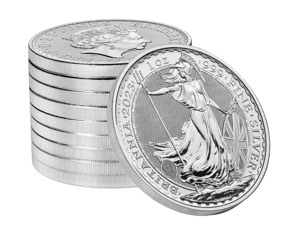Tavex uses cookies to ensure website functionality and improve your user experience. Collecting data from cookies helps us provide the best experience for you, keeps your account secure and allows us to personalise advert content. You can find out more in our cookie policy.
Please select what cookies you allow us to use
Cookies are small files of letters and digits downloaded and saved on your computer or another device (for instance, a mobile phone, a tablet) and saved in your browser while you visit a website. They can be used to track the pages you visit on the website, save the information you enter or remember your preferences such as language settings as long as you’re browsing the website.
| Cookie name | Cookie description | Cookie duration |
|---|---|---|
| tavex_cookie_consent | Stores cookie consent options selected | 60 weeks |
| tavex_customer | Tavex customer ID | 30 days |
| wp-wpml_current_language | Stores selected language | 1 day |
| AWSALB | AWS ALB sticky session cookie | 6 days |
| AWSALBCORS | AWS ALB sticky session cookie | 6 days |
| NO_CACHE | Used to disable page caching | 1 day |
| PHPSESSID | Identifier for PHP session | Session |
| latest_news | Helps to keep notifications relevant by storing the latest news shown | 29 days |
| latest_news_flash | Helps to keep notifications relevant by storing the latest news shown | 29 days |
| tavex_recently_viewed_products | List of recently viewed products | 1 day |
| tavex_compare_amount | Number of items in product comparison view | 1 day |
| Cookie name | Cookie description | Cookie duration |
|---|---|---|
| chart-widget-tab-*-*-* | Remembers last chart options (i.e currency, time period, etc) | 29 days |
| archive_layout | Stores selected product layout on category pages | 1 day |
| Cookie name | Cookie description | Cookie duration |
|---|---|---|
| cartstack.com-* | Used for tracking abandoned shopping carts | 1 year |
| _omappvp | Used by OptinMonster for determining new vs. returning visitors. Expires in 11 years | 11 years |
| _omappvs | Used by OptinMonster for determining when a new visitor becomes a returning visitor | Session |
| om* | Used by OptinMonster to track interactions with campaigns | Persistent |
| Cookie name | Cookie description | Cookie duration |
|---|---|---|
| _ga | Used to distinguish users | 2 years |
| _gid | Used to distinguish users | 24 hours |
| _ga_* | Used to persist session state | 2 years |
| _gac_* | Contains campaign related information | 90 days |
| _gat_gtag_* | Used to throttle request rate | 1 minute |
| _fbc | Facebook advertisement cookie | 2 years |
| _fbp | Facebook cookie for distinguishing unique users | 2 years |
The Density of Gold and Other Metals

In the world of metals, gold stands out not just for its lustrous beauty but also for its remarkable density. This article embarks on a journey through the dense forest of metallic elements, with gold as our shining beacon. Let’s look at what makes gold and other metals so special in terms of density, and why it matters more than you might think.
Understanding Density

At its core, density is a measure of how much mass an object contains in a given volume.
It’s a fundamental property that distinguishes not just metals from each other, but also plays a pivotal role in determining their utility, value, and even their beauty.
But what exactly makes density so crucial in the realm of metals, and how does gold compare to its peers?
Gold’s Unique Characteristics
Gold’s density, as a precious metal, is approximately 19.32 grams per cubic centimetre
This is a figure that is significantly higher than many common metals. This high density is not just a number; it’s a testament to pure gold’s rarity and its coveted status throughout history. But gold’s allure isn’t just about its weight – it’s about the stories it tells and the technologies it enables.
Other factors about gold weight:
- A cubic centimetre of gold will weigh 19.3 grams.
- A cubic metre of gold will weigh 19.3 tonnes.
- A cubic inch of gold will weigh 10.13 troy ounces = 11.06 avoirdupois (ordinary) ounces.
- A cubic foot of gold will weigh 1188.6 pounds (avoirdupois).
Comparing Gold with Other Metals
When we place gold side by side with rare metals like aluminum, iron, and silver, the contrasts in density become starkly apparent. These differences aren’t merely academic; they influence everything from the metal’s strength and durability to its economic value and environmental impact.
Please note, the actual densities of your metal may vary depending on the state of the metal, and different factors such as if you have been storing it at room temperature or higher, and the type of way it has been produced.
| Metal | Density |
| Gold | 19.3 |
| Silver | 10.5 |
| Platinum | 21.4 |
| Palladium | 12.0 |
| Copper | 9.0 |
| 14ct | 12.9 to 14.6 |
| 18ct Yellow | 15.2 to 15.9 |
| 22ct | 17.7 to 17.8 |
| Sterling Silver | 10.2 to 10.3 |
Factors Affecting Metal Density

Several factors can alter the density of metals, including temperature, pressure, and alloy formation. Understanding these factors is crucial for industries that rely on precise material properties for their products and technologies.
Temperature and Pressure
As temperature increases, most materials expand – their molecules move more vigorously, requiring more space. This expansion leads to a decrease in density, as the same mass now occupies a larger volume.
Conversely, when temperature decreases, materials contract, molecules move closer together, and density increases because the same mass occupies a smaller volume. This can occur with gold and its density.
Alloy Formation
The density of an alloy depends on the atomic masses and the sizes of the atoms of the constituent elements
If a lighter element (with a lower atomic mass and larger atomic size) is added to a heavier metal, it can increase the volume without adding much weight, potentially decreasing the overall density of the alloy.
Conversely, adding a heavier element (with a higher atomic mass and smaller atomic size) can increase the density of gold coins or other metal densities.
Applications of High-Density Metals

High-density metals like gold have a wide range of applications, from the jewellery that adorns our bodies to the advanced technologies that power our world.
Jewellery and Ornamentation
Apart from investment bullion, precious high-density metals like gold, silver, and platinum, are widely used in jewellery making for their aesthetic appeal, resistance to tarnishing, and the prestige associated with them.
The density of gold not only gives it a satisfying heft but also makes it ideal for crafting intricate jewellery that lasts for generations. Its density is a hallmark of quality and desirability in the world of ornamentation.
Industrial and Technological Applications
Beyond its beauty, gold’s density and other physical properties make it invaluable in various industrial and technological applications, from electronics to aerospace.
High-density metals like tungsten and its alloys are used in the aerospace and aviation industries
This is used for balancing weights, vibration dampening components, and in the construction of aircraft parts due to their high strength and resistance to high temperatures.
Platinum and palladium are used as catalysts in chemical reactions, including those in automotive catalytic converters to reduce harmful emissions, and in the chemical industry for producing acids, organic compounds, and pharmaceuticals. Their high density and stability facilitate their effectiveness in these roles.
Environmental and Economic Considerations

The extraction and use of high-density metals indeed carry profound environmental and economic considerations.
The mining and extraction processes for high-density metals can lead to significant disruption of ecosystems. This includes deforestation, soil erosion, and contamination of water sources with toxic chemicals used in metal extraction.
Efforts to reduce these impacts include adopting more sustainable mining practices and stricter environmental regulations
The density, rarity, and utility of metals like gold play a crucial role in shaping their market value and economic significance. Understanding these dynamics is essential for anyone involved in the metal industry.
The Future of Metal Usage

As we look to the future, it’s clear that high-density metals will continue to play a vital role in our world. But how will technological advances and changing economic landscapes shape their usage?
Emerging technologies have the potential to revolutionise how we use and think about metals. From new alloys to novel applications, the possibilities are boundless.
Recycling high-density metals from electronic waste, industrial scrap, and end-of-life products is crucial for sustainability and the future of metals
It conserves natural resources, reduces the need for new mining, and decreases the environmental footprint associated with metal production. Enhancing recycling infrastructure and technologies can increase recycling rates and minimise environmental impact.
Economic factors will undoubtedly influence the future of metal markets. By anticipating these changes, industries can prepare for the challenges and opportunities ahead. For example, the rarity and utility of high-density metals like gold, platinum, and palladium significantly influence their market value.
Key Takeaways
In the world of metals, gold shines the brightest, not just in luster but in density. Understanding the density of gold and other metals is more than an academic exercise; it’s a window into their utility, value, and impact on our world.
As we continue to explore and utilise these remarkable materials, let’s appreciate the dense and intricate tapestry they weave in the fabric of human civilisation.
FAQs
1) What are the different purity’s of gold?
Gold can come in a lot of different purity’s depending on how it is made. Learn more about karat values and the purity of gold here.

















